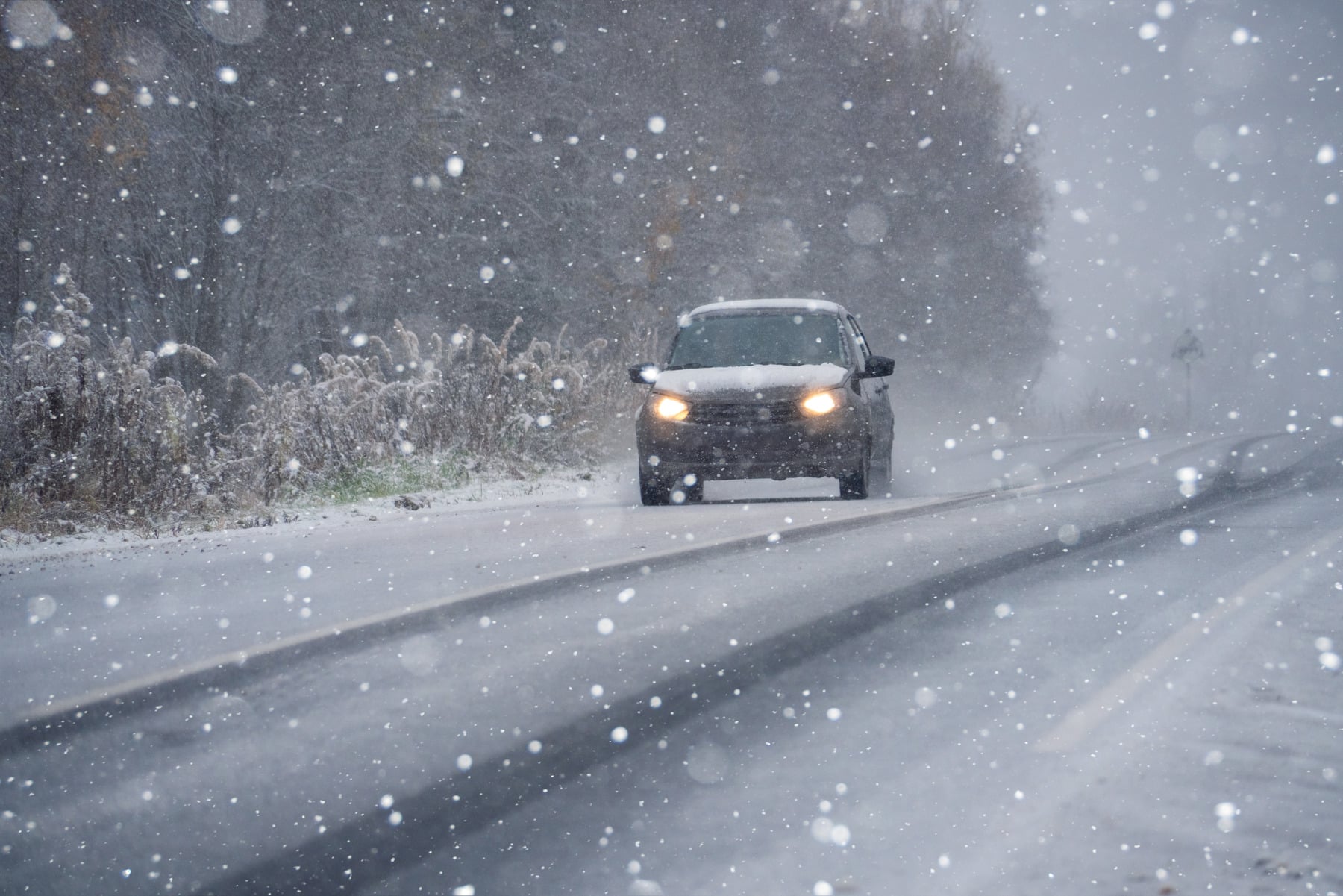
Driving in snow is risky. That’s especially true in Maine, a state that represents less than 1% of the United States’ total population yet is home to almost 10% of all fatal motor vehicle accidents caused by snow or ice. While that statistic is scary, there are steps you can take to increase your safety. By getting prepared for the winter weather, adjusting the way you drive, and following these winter driving safety tips, you can help protect yourself and others who are on the road in bad weather conditions.
16 Winter Driving Safety Tips
- Slow down. You have less traction on snow and ice, and it’s harder to stop.
- Illuminate your headlights and taillights whenever driving in precipitation such as snow or freezing rain.
- Increase your following distance to 8-to-10 seconds so that if you do need to stop, you’ll be able to do so safely (one rule of thumb is to always leave sixteen car lengths between you and any car in front of you, more in snow and ice).
- To avoid getting stuck, don’t stop if you don’t have to. If you can keep rolling ahead slowly, it will be easier to start your vehicle again than if you come to a full stop.
- To avoid losing traction and skidding, accelerate and decelerate slowly.
- If you do skid, steer in the direction of the skid.
- When driving uphill, avoid stopping if possible. Try to get some inertia built up before going uphill because applying too much gas can make your wheels spin.
- When driving downhill, go slow. If your car allows, change into a lower gear.
- If visibility is very limited because of snowfall, get off the road, go to a safe place, and wait until visibility improves. If possible, don’t stop on the shoulder of the road because other vehicles won’t be able to see you.
- Carry bright traffic cones or flares to increase your visibility should you have to stop.
- If you have an emergency where you are stopped or stalled, be careful to avoid the risk of carbon monoxide poisoning. Check to make sure that snow or other obstructions aren’t blocking your exhaust pipe, and run your car sporadically and only enough to keep you warm. Stay with your vehicle because it’s easy to get lost if you try walking in a storm.
- Always have at least half a tank of fuel to avoid freezing in the gas line.
- Before leaving, check your battery, wiper blades, belts, charging system, and side mirrors.
- Inflate your tires to the vehicle manufacturer’s recommended pressure, not to the number on the tire itself. Check your tires for damage, age, and punctures, cuts, or cracks. It’s good to use winter tires, but if you are using all-season tires, check that the tread is more than 2/32 of an inch. Also, check your spare tire.
- Become familiar with any safety features that you have on your vehicle, such as traction control or an anti-lock braking system (ABS).
- If you can avoid being on the road in bad weather, stay home! If you must go, tell someone about your planned route before you leave.
Contact the Personal Injury Attorneys at Garmey Law
These winter driving safety tips can help protect you in Maine’s snowy and icy weather. However, no matter how careful and well-prepared you are, you can’t control the behavior of other drivers, and an unexpected accident could happen at any time. Should that ever occur, you can always turn to the trusted motor vehicle accident lawyers at Garmey Law for help in your recovery. Call us at (207) 481-4683, or contact us through our website for a free consultation.
